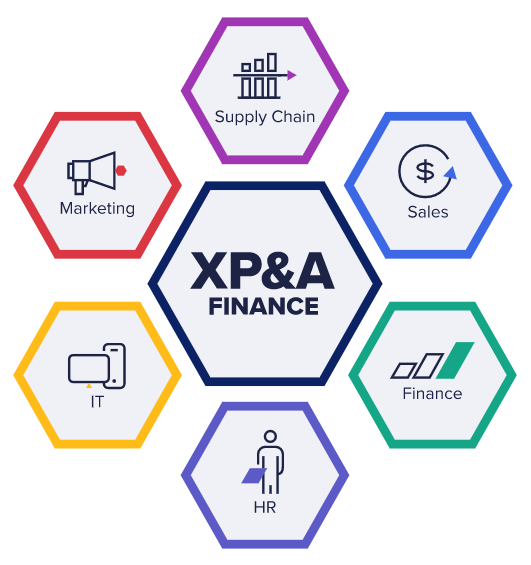-Help-Pharmaceuticals-Sustain-Profits.webp)
Sign up to receive latest insights & updates in technology, AI & data analytics, data science, & innovations from Polestar Analytics.
The American writer and humorist Mark Twain once said, "Good decisions come from experience. Experience comes from making bad decisions." This statement perfectly describes the impact of the Financial Planning and Analysis (FP&A) function in guiding the enterprise away from poor decision-making and into more agile planning processes.
The traditional Financial Planning & Analysis (FP&A) processes involved relying on spreadsheets to make tedious calculations at multiple transaction levels and then compiling them to make a higher level of consolidated reporting to drive financial strategy. The spreadsheet-based Financial Planning & Analysis processes are not dynamic enough to handle the modern enterprise-grade use cases and provide the decision-makers with the necessary support to make essential and smart financial strategy decisions.
The pandemic outbreak threw a curveball at businesses across the globe, leaving finance teams scrambling to analyze their numbers and adjust plans more rapidly than ever before. Pressure from senior executives for regular performance updates took financial planning and analysis (FP&A) specialists out of their comfort zone. It highlighted the unsuitability of legacy ways of working in an increasingly turbulent market environment that demanded financial agility.
Pharmaceutical companies are facing congressional and regulatory pressure to cut costs and lower prices while struggling with dwindling innovation models and decreased profitability. They face radical reforms that affect drug trials, sales, pricing, manufacturing, and more. Today many organizations are still lumbered with a complex mix of different planning systems, consisting of siloed data sets and inflexible legacy systems stitched together with numerous offline spreadsheets.
As a result, people across the same enterprises are aligned to work on disconnected tools that prevent being able to work together on business problems; make decisions with the complete insight of their decision's effect on both other downstream business functions and financial outcomes; or generate the rapid re-forecasts required to constantly realign companies with a sales trajectory outside of previous forecasts. Put simply; they don't have the tools for the job. While other parts of the business have used technology to transform their internal business processes, the finance function in the pharmaceuticals industry has largely stood still regarding robust and agile enterprise planning.
In connected planning, processes are built across external drivers, such as the incidence of disease, and internal drivers, like productivity ratios, so forecasts can effectively become light-touch and run in real-time, rather than batch mode, so that organizations can iteratively discover how the choices they curate impact financial results.
That way, FP&A professionals and business managers can collaborate around a shared set of data that is up to date always and is held under enterprise-level security. So departmental plans can be rapidly aligned to address a crisis or an upcoming opportunity. What's more, with the Anaplan FP&A function in place, teams can amend and build models on their own, rather than waiting on external or internal IT professionals, so it is definite that planning platforms are as intuitive as consumer applications.
As businesses and markets have become more complex today, companies have realized that FP&A principles must be extended across the different departments to develop a more holistic picture of business health. Organizations need to adopt a flexible, collaborative, and dynamic approach to planning processes. A modern approach to FP&A provides the ability to analyze data with real-time accuracy, be flexible and collaborative and perform scenario-analysis to test alternative assumptions and what-ifs. Additionally, there are so many more benefits such as predictive forecasting, reporting and analysis, financial consolidation, ad hoc reporting, analysis of deviations, etc.
The present-day business scenarios, with their quickly evolving nature, call for an agile system that provides decision-makers with a common framework for measurement and collaboration and which allows for a cross-functional understanding of the effect of each area's performance with well-defined, published, and measurable performance objectives and metrics. This creates the need for xP&A.
Enterprises are increasingly aware of introducing operational data to the FP&A process. Budgeting, planning, and forecasting become more informed and more insightful when the impact of operational activities is visible. Extending FP&A principles outside of the finance sector is termed by Gartner as Extended Planning and Analysis (xP&A). According to the new research, “by 2024, Gartner expects FP&A to evolve to encompass xP&A, a strategy where the “x” denotes breaking down traditional silos between enterprise financial and operational planning processes in order to deliver new levels of transformative business value.

Source: Gartner
This granular view is seen as a best practice approach to modern business planning, ensuring that the complete organization is aligned to the same strategic goals. xP&A also drives accountability for results, as each department understands how its activities affect the bottom line. Achieving xP&A requires a robust planning platform that seamlessly integrates strategy, Finance, and operations and copes with the big data underpinning it.
Get in touch with us to maintain agility in your planning and ensure accuracy and complete insights into the business to make better decisions, faster.
Pharmaceutical organizations face numerous challenges, which include high capital expenditures, long time spans between research and delivery to market, accurate pricing models, and the ability to handle high levels of debt and profitability.
The power to effectively manage these situations is crucial to success in this industry. Finance teams can achieve it with the proper data analysis and reporting tools. Therefore, if you are still grounded in spreadsheets and legacy planning systems, you can discuss your requirements at Polestar Analytics. Book a Demo today.
About Author

Content Architect
The goal is to turn data into information, and information into insights.